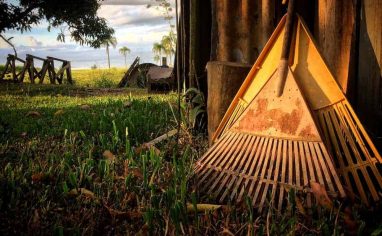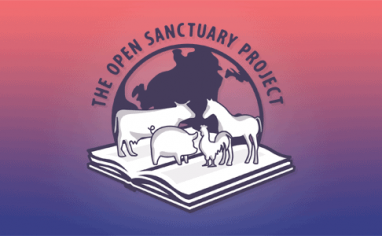
Subscribe To The Open Sanctuary Podcast
If you’d like to get the latest episodes of The Open Sanctuary Podcast, you can subscribe for free on all Podcast platforms, including Apple Podcasts and Spotify!
Episode Notes
Executive DirectorThe individual formally in charge of final decision making at an organization, who sometimes works closely with the organization’s Board of Directors. Sometimes a Founder is an Executive Director, especially early in a nonprofit’s growth stages. Mckenzee and NonprofitA non-governmental organization whose primary purpose is something other than selling goods or services. Specialist Julia discuss three tools The Open Sanctuary Project offers to help your sanctuary minimize liability. These include a resource discussing and analyzing insurance options, a liability waiver template and its accompanying resource, and a free system you can download to easily track visitor liability waivers!
—
This Episode’s Referenced Open Sanctuary Project Resources:
- Crafting An Accident Waiver For Your Animal Sanctuary | The Open Sanctuary Project
- Accident Waiver And Release Of Liability Template For Animal Sanctuaries | The Open Sanctuary Project
- The Open Sanctuary Project’s Free Visitor Waiver & Sign-In System | The Open Sanctuary Project
- Getting The Right Insurance Coverage For Your Animal Sanctuary | The Open Sanctuary Project
Episode Transcript (Auto-GeneratedThe following content was transcribed through an automated process and may contain transcription errors or misspellings.)
Mckenzee Griffler: Welcome to another episode of the Open Sanctuary Podcast. I am the Open Sanctuary Project’s executive director, Mckenzee Griffler. And today I am chatting with my friend and colleague, Julia Magnus, our nonprofit specialist. Today we are here to talk about a topic that is less fun than usual, although one that is very important to all of us here at the Open Sanctuary Project, and that is the topic of liability. But not to worry, because we are going to chat about three different ways that your animal organization can minimize liability. And I know it can be dense, but I hope like all episodes of the Open Sanctuary Podcast, it can be an enjoyable little chat between friends and not a giant stressful ball of a situation as sometimes is implied with such topics. But we are going to get right into it. As an opening question, Julia, when we are talking about liabilities at animal sanctuaries, animal rescuesOrganizations that help secure animals from dangerous or unacceptable situations. As organizations, rescues may or may not have dedicated permanent infrastructure for housing animals., general animal organizations, what are we talking about exactly? Let’s define it.
Julia Magnus: Yeah. Or for any organization, generally speaking, liability is essentially when a person or an entity becomes responsible for something, particularly under the law. And there are lots and lots of ways that a sanctuary could become liable or responsible for something that might happen to another person. And this can often lead to unexpected, unpredictable, and overwhelming expenses. So maybe the first thing that comes to mind when we are thinking about that is injury to a human. Like what happens if a visitor happens to get injured on sanctuary property either through contact with a resident or from slipping and falling on sanctuary grounds. Injuries to sanctuary workers in the course of their work is also another prospective area of liability. And just to be clear, there is absolutely no 100% foolproof way that you can avoid liability, but there are ways that you can anticipate it and manage your exposure to it.
Mckenzee Griffler: So, just off the bat, I know some people are thinking, “Well, if I make somebody sign a waiver, I don’t have to be liable yet.”
Julia Magnus: We will get to waivers.
Mckenzee Griffler: We are going to get to waivers.
Julia Magnus: We are definitely going to get to waivers. 100% we love the waiver. However, a waiver is never sufficient for managing liability. So, that kind of brings us to our first tool, which we have a full resource about, that is available freely for your perusal and that is insurance. Now, just a side note, I say insurance. I don’t know. Do you say insurance?
Mckenzee Griffler: I say insurance, but today we are going to be saying insurance.
Julia Magnus: I say insurance because I think I picked this up in law school where I went to school in the south and I think they say insurance there and that’s for some reason I can’t stop saying it this way. So, insurance.
Mckenzee Griffler: So, insurance, I am thinking about, you know, a policy. A lot of us have individualized healthcare insurance, but obviously we are talking about organizational insurance. What does that look like for an animal sanctuary? We should probably consider why we need it first and then we can kind of get into what it looks like. And it’s important to know that nearly 90% of all nonprofit insurance claims are due to accidents and injuries and legal costs associated with defense of lawsuits are really substantial. They can climb really fast and they can climb well beyond the damages sought by somebody who is sued for an injury claim. So, if you are operating an animal sanctuary, your insurance coverage is absolutely critical. It should be one of the top priorities in your budget. Sanctuaries, particularly those who allow members of the public to volunteer, visit, have a number of diverse challenges and hazards that could potentially spell the end of the organization in terms of resources should an accident or altercation occur on your grounds. So, if you face a personal injury claim, let’s be clear, it’s not just the amount claimed by the plaintiff you have to worry about. It’s all the fees associated with the defense, and that adds up real fast. A large award and the associated legal fees ultimately do jeopardize the welfare of your residents if you run out of resources at your sanctuary to fund this. And so, ideally, you are going to mitigate all potential risks that you can manage within your budgetary constraints by getting, first of all, try to minimize hazards at your sanctuary. And second of all, get good insurance. So that brings us to your question. Yeah.
Julia Magnus: Yeah. Absolutely. And you know, we have some good general safety resources that can help prevent accidents before they happen at your sanctuary for caregivers, for visitors, for volunteers, and all of it goes a long way. Preventing the accident from happening in the first place goes a long way, obviously. But in the event that something unplanned happens, what kinds of insurance coverage should animal organizations and sanctuaries be thinking about in order to protect themselves? Because I know there are a lot of different kinds of insurance. Definitely lots of different kinds and it is not always clear what does what. So maybe the main types you should consider are general liability insurance, workers’ compensation insurance, directors and officers insurance, property insurance, auto insurance, and there are also other little bundles that you can add into this nice little package. So maybe your first move is to see if you can find a good insurance broker in your area who has knowledge at least of nonprofitsNon-governmental organizations whose primary purpose is something other than selling goods or services. and ideally has some knowledge of insuring an animal organization and might have knowledge of the kinds of risks that are common to operations like sanctuaries. And one pro tip to do this is potentially talk to other sanctuaries in your area. Ask who they use to find their coverage and talk to them about their coverage.
Mckenzee Griffler: Absolutely. One thing that I have heard from a lot of sanctuaries over the years is it is not easy to just go out and find an insurance person who fully understands what is going on at an animal sanctuary. And sometimes the most equivalent policies presented might be for farmsFor-profit organizations focused on the production and sale of plant and/or animal products. or homesteads or even petting zoosOrganizations where animals, either rescued, bought, borrowed, or bred, are kept, typically for the benefit of human visitor interest.. And I think it’s important that even if the language doesn’t reflect your values, for your operations that sometimes you have to get a little bit creative with insurance to make sure that the coverage is appropriately covering what is happening at your sanctuary and what kind of protection you are looking for. And that being said, why don’t we talk about I would say the one that people probably think about a lot. Why don’t we talk about general liability insurance for sanctuaries?
Julia Magnus: Yeah, this is probably the most important coverage that you could get and should cover any kind of bodily injury or property damage claimed against your organization, your residents, or people who are acting on behalf of your sanctuary, so potentially staff. It also can protect against claims like defamation or copyright infringement. So, when you are looking into general liability insurance, you also want to check out, does it cover events that might take place off your sanctuary’s grounds like fundraisers, galas, awards ceremonies? Some general liability insurance policies may specifically exclude anything to do with animals and so you will need to read the fine print and ask many questions to make sure that your sanctuary is protected. Also check out whether your volunteers receive coverage under these policies that you are looking at. So there is a lot of things to consider in there and there are a lot of possibilities that the coverage might be suboptimal compared to what you are actually doing. So I am going to definitely underscore talk with a knowledgeable agent and really talk through all of the things that you are envisioning happening that you would like coverage for. The next one that I think is important that we talk about is workers’ compensation.
Mckenzee Griffler: Yeah. And this is not optional. Nearly all nonprofits that are formally organized in the US with employees are legally required to have some sort of workers’ comp policy. So that if an employee gets injured at your organization, this will cover their expenses. Please keep in mind there are state requirements as well. At times that may be in addition and it’s really important to check those out and pay attention because I have heard recently of a sanctuary that did not meet state requirements and they were facing some pretty hefty fines and penalties for that and that is pretty scary. So, this is also another piece of coverage that you would want to look at to make sure that it includes coverage for volunteers at your sanctuary.
Julia Magnus: Absolutely. And like we always say, it’s really important to work with experts and professionals in your region who are aware of the laws governing your region because these things can be so specific depending on where you live. Another insurance that I didn’t know about for a long time but we actually get coverage for at the Open Sanctuary Project which I feel good about is directors and officers insurance also known as D&O insurance. What is that?
Julia Magnus: So this insurance will protect your organization’s director and your organization’s board members from financial damages which might result from employment disputes. Though there are also other scenarios where this insurance is a valuable thing to have. Without it, your board members could potentially be held liable and heavily penalized for actions of the organization or actions taken by employees of which they might not even be aware. It may be tempting to disregard this coverage, but it could be financially disastrous to a board to sort out legal sticky messes that are against them without this protection. And it would be really sucky to expose them to this kind of liability when your board members typically serve as volunteers. Like the last thing that a kindhearted board member wants is to suddenly get sprung with a lawsuit that they had absolutely nothing to do with.
Mckenzee Griffler: Absolutely. I think that this is one that all nonprofit organizations should have healthy, robust, participatory boards. It’s an important thing to do to keep those board members safe.
Julia Magnus: Totally agree. So, there are a couple others where the need might seem a little bit more obvious or clear. One that comes to mind is property insurance and another is automobile insurance. For sure, property insurance is so critical for sanctuaries because structures and resident living spaces will probably be some of the most expensive costs a sanctuary will incur, aside from vet bills. Sorry, I always have to mention vet bills because they are big costs. This coverage can help you recover costs for structures themselves and the property within them if they are damaged or destroyed. And you will want to ensure that when you are getting this coverage, you are covering as much of the value of the property as you can because reconstruction and replacement costs could potentially bankrupt your sanctuary in the event of losing a high-cost structure. It can also include things such as loss due to natural disasters, vandalism, theft. But do keep in mind when it comes to natural disaster, there may be some areas where you might not be able to get general coverage against what might be considered a known risk in this area. For example, in a hurricane-prone area, you might not be able to get insurance against wind or flood damage under a general property policy. So this is another reason looking backwards why you would want to do a lot of thinking when you are making decisions about where to site your sanctuary. So then we get to auto coverage. So this is similar to personal car insurance. It can be very flexible. So this can cover accidents, towing, comprehensive claims for the vehicles at your sanctuary and those used for organizational purposes. So you could also extend this kind of policy to cover the vehicles of employees, volunteers on sanctuary business. And this is typically known as hired or non-owned liability. This can be really critical because what if a volunteer is driving to the store to get food for your animals and gets into a fender bender? It would be nice for them to have coverage to help them along with that. Personal car insurance typically won’t insure vehicles being used for work purposes. So, if full coverage is cost-prohibitive, you can add a business endorsement to personal car insurance to get some protection affordably. And again, having a good broker here who can shop around for you and offer you different options can be extremely helpful.
Mckenzee Griffler: I know we are talking about a lot of heady things. I know some sanctuaries might be thinking, “Oh my goodness, there are so many different things that we need to think about, but we have a few more policies that sanctuaries might want to think about. And feel free, if it is taken a lot, just take a little break, press pause, go, you know, petAn animal who spends regular time with humans in their home and life for companionship or human pleasure. Typically a small subset of animal species are considered to be pets by the general public. a cat or something, and then you can come back and we will talk about just a few more different types of insurance policies. So, now that you have petted your cat, taken a breath, had a sip of tea, let’s talk about a couple of other different kinds of policies you could look at. Ask your broker about. We just mentioned environmental hazards like hurricanes. So, if your regular property coverage won’t cover certain kinds of hazards, it can be possible to get environmental hazard policies which cover damages to your property due to things like flooding, wildfire, earthquakes, etc., things that might happen in your area. You can also get insurance against crime loss. So, that is protection if you have concerns about the safety of your sanctuary’s property. There is also mechanical device coverage in case you have expensive machinery that might break, and climate control equipment in case anything breaks. This can help you get that sorted out. Additionally, there is electronic data processing coverage which is an affordable option to protect both computers and data in the event of accidents or malfunctions. And okay, this might seem like something we should have mentioned earlier, but animal insurance, right? This might seem unusual for a sanctuary, but there are pet insurance companies that do cover non-typical companion animalAn animal who spends regular time with humans in their home and life. Typically cats and dogs are considered companion animals, though many species of animals could also be companion animals. species. You might have to shop around for this to find that, but it could be possible to get pet insurance for a sanctuary resident in case of veterinary costs. This can help in an emergency. I will say that that kind of insurance coverage can be quite pricey and it might be a lot to get everybody at your sanctuary covered. And then finally, there is what we call umbrella liability insurance, which is just a way that you can extend all of your policy liability limits without adding much cost or premium. All right. Well, deep breath. That covers the basics of insurance. I have a few other little tips about insurance because I think it’s important to mention. For one thing, it’s really important that once you have your insurance, you have to follow your insurer’s rules and be especially mindful if they ever decide to send out an inspector to review your property and suggest safety improvements. Because if you comply with suggested safety modifications, not only would these likely make your sanctuary safer for everybody, but it might even help reduce your premiums in the future. You might in fact get a discount for listening to your insurer. The number one way to keep affordable insurance and not risk being dropped by your insurer is to keep risk to a minimum. So that includes things like establishing appropriate policies for everyone who sets foot on your property, providing effective volunteer training and oversight, following OSHAThe United States Occupational Safety And Health Administration, a government department that ensures workplace safety, or the Occupational Safety And Health Act, the law that governs workplace safety. standards where possible, and we do have a resource on OSHA basics, minimizing fire risk on your property. We have another series of resources all about that. Establishing effective contingency policies. Once again, we have a resource. And being proactive about any potential safety concerns on your property as they arise. Also, make sure to check out our resource on insurance policies for Sanctuary to find out some additional tips on finding brokers. So, that is insurance. That is 103. You did it. We are so happy that you are still listening. We are going to move on to another important tool to manage potential liability. We talked about it a little bit in the introduction, but it’s time to get into the nitty-gritty. This is a really important topic. There is a lot of uncertainty around how this works and I am really excited to talk to Julia about it. We have on our website our most popular, most downloaded resource on our website is our accident waiver and release of liability template but there are so many “buts” involved in this download and the concept of accident waivers. So Julia, what is the deal with accident waivers?
Julia Magnus: Okay, let’s start general and yes, we have two very critical tools on our website that are very helpful with respect to accident waivers. The first being that extremely popular download and we will get to the second, but essentially accident waivers are super important for animal sanctuaries. But again, let’s be very clear that they do not fully insulate you from potential liability. They need to be paired with sufficient insurance. Don’t just make a waiver and call it a day. Securing a signed waiver from all guests entering your property is an important, critical practice to protect your sanctuary, but do it in conjunction with appropriate insurance because having a waiver does not mean that someone cannot sue you. Anyone has the right to argue that a waiver does not excuse the situation they found themselves in and that means court. Legal challenges again spiral in costs very quickly, regardless of whether they have merit or not. So with all that said, it’s critical that you make a policy of gathering accident waivers and release of liability forms from everybody who comes on your property if you are conducting any activity on your grounds that involves volunteers or visitors from the public. This very basic piece of legal documentation is your first line of defense from liability and lawsuits just in the unfortunate event of somebody getting injured and getting mad enough to sue you. But in different jurisdictions, the likelihood of being able to enforce a waiver is going to vary. And so you are going to have to consult with counsel. We will probably repeat that again and again and again: consult with counsel, but a signed waiver is only going to help you strengthen your case in the case of any potential conflict in court.
Mckenzee Griffler: I feel like for me, a lay person who is not a lawyer. I am hearing a lot of almost conflicting information. So, what exactly does a waiver do?
Julia Magnus: I think that’s really fair because I think people think waiver, okay, it just means that everybody has waived their rights. The end. Done. No, waiver is a form of notice. So essentially in law, there is this doctrine under tort law, and tort does not mean delicious cake or pie. Nor does it mean a very sweet little tortoise. Tort essentially in law is personal injury law. Let’s just put it that way. So within this realm of law, there is this doctrine that is called assumption of risk. What it says basically is that if you have an injured plaintiff, somebody suing, and they knew in advance of engaging in an activity, what the risks of that activity were, then they got injured doing it, and then decided to sue you. A court might look at that knowledge and decide to limit the liability of the person who either injured them or your sanctuary if they happen to get hurt at your sanctuary. So, basically, a waiver is a form of notice. It informs a visitor of potential risks. Their signature acknowledges that they were made aware of these risks and they undertook the activity regardless. So if they then sue based on the injury that they suffered, which was part of what you list in your waiver, the waiver then serves as a first line of defense that will limit your liability towards this plaintiff. Okay, here are lots of “buts.” This defense is only going to hold water if the injury was covered under the stated risks in your waiver. The waiver was written following all the laws of the land in which your sanctuary falls. So again, knowledgeable local legal counsel. And just like the waiver says, that sweet, sweet downloaded waiver that we even had the help of our friends at the Animal Defense Partnership put together, that does not mean that this waiver is good for your organization. It is merely a starting place and then you can go to our second resource all about explaining every part of that downloaded waiver and then you can take that waiver draft and go speak to appropriate legal counsel in your jurisdiction. Maybe talk to two different sets of legal counsel in your jurisdiction and say I would like to use this waiver. What does it need to work where we are? Because we cannot make a waiver that works for everybody.
Julia Magnus: And once you do that, once you speak to knowledgeable local legal counsel, they may strengthen this waiver depending on what the precedents are in your jurisdiction with additional warnings of risk. They might counsel you to implement signage at your sanctuary to help with this. They might give your staff specific instructions. They may also recommend that you implement brief visitor safety courses. And again, even with all this, a waiver will not stop someone from suing you. So, it cannot prevent legal fees necessarily. It is not an excuse for not exerting all caution and effort to minimize dangers and protect your visitors, and it is not an excuse to not have insurance.
Mckenzee Griffler: So, that all being said, the many “buts” on this topic revealed, what are some general tips that folks should follow at the very beginning stage of crafting an accident waiver?
Julia Magnus: We have lots of them, but let’s make it very clear. We are not your attorney. We cannot be your attorney. I am one attorney licensed in Illinois. I cannot represent you. So again, when dealing with high-stakes issues, you have to talk to somebody in your jurisdiction who knows about this stuff to make it as clear and defensible as possible. So there are some general guidelines, however, that you are going to want to think about. Number one, make sure your waiver is in a large enough typeface, at least 10-point size so that it is actually readable and that it is printed clearly, not blurry, so nobody can say that they could not read the thing. And another form of clarity. Make sure that it is written clearly and unambiguously. And try to do this using layman’s terminology as much as possible. Trying to avoid super duper legal-ese that is really hard to understand. You want people to understand what it is that they are being given notice of. Give it to them by itself for review versus with a pack of other documents for them to look at because you want them to take notice specifically of this document. If it is bundled with a bunch of other stuff, people may be like, “Ah, whatever. Flip, flip, flip, sign, whatever.” You want to make sure that it is conspicuous and therefore less susceptible to legal challenge. For example, if you have a group come to your sanctuary, instead of having a large group collectively sign it, have one waiver for each person because arguably, if you give one document to an entire group, they are going to have less time to review it. Its validity may be challenged in that respect. You might want to include a phrase similar to “in consideration of participation in” whatever event it is that you are holding. This will be language that makes the court think this is a valid contract. That is just contract language and you want to make sure that this looks like a valid contract. It means that basically consideration is that each party is getting something out of this interaction. One party gets to participate in the activity, and the other one in return is not held liable for the risks that they are notifying the participating party about.
Julia Magnus: So then obviously you are going to want to include warnings of those risks which could include permanent disability, death, and that might sound super grim but it demonstrates to the signing party the risks involved that there are real risks involved and makes them aware of them plainly. And you also want to include assumption of both known and unknown risks so you don’t limit the scope of your defense in case something really random happens and you are like, “Oh, wait. I didn’t list that in my waiver.” This kind of language helps insulate you from that. Also, include a phrase releasing the organization. Here is the phrase: “To the maximum extent permissible under applicable law,” which helps keep most of the contract enforceable in the event that certain parts are struck down in court. There is no waiver that can exculpate you from every possible risk. And if you say we are excused from everything, that is never going to hold water. So it is much better to say “to the extent permissible,” this excuses us. So waivers should be signed at each event when an individual visitor arrives rather than only once. So if you have a repeat visitor, have them sign every time. It just helps every time to just know that this person acknowledged the risks every single time rather than having to go back, reach back to a previous waiver and be like, “See, they signed it back like 3 years ago.” You don’t want to do that. So, if you have minors attending events, you need to include an area on your waiver for their parent or legal guardian to sign because a minor cannot sign away their right to sue. And there are questions as to whether a parent can sign away their kids’ rights, but you just want to have it there. It’s an important safeguard. Another option is you could do something to allow permission to take photos of videos of the visitor when they are there because one thing I am always cautious about is using photos without folks’ permission. So you could actually put that in there and just say like just so you know if we get a really cute picture of you petting Bea the llama then we might put that on Facebook because it is adorable. And so this way they were on notice that you might do that as well.
Julia Magnus: The one thing you do not want to do is, like I said, you cannot waive away every single thing. You cannot waive away responsibility for gross negligence or egregious misconduct. So if you have a very crabby educator one day who decides they want to punch someone in the face, you cannot waive that away. This cannot be waived away. Although you can potentially waive away regular negligence. So that is a lot. Liability is a lot and risk is a lot. But you know we do really believe that having tools to help manage these liabilities, it’s really important. Even if you need to put on your special socks and drink your most special cup of tea before you deal with these issues, they still have to be dealt with. But as always, the Open Sanctuary Project has your back. We have several free tools that we offer to sanctuaries and rescues to get them started with crafting waivers or to help them improve their existing ones. What do we have for the people? We mentioned our very popular, very beloved, most downloaded resource which was developed with the aid of Animal Defense Partnership. Thank you friends. Our accident waiver and release of liability template. We have dropped it in the show notes. Again, great starting point, emphasized starting point for you to look at when you start working on your waiver. Because again, when you start this, you can bring it to an attorney in your jurisdiction who is going to make sure that it complies with your local rules and is customized to your specific needs. Tool number two, this is really a fun one. I don’t know if a lot of people know we have tools like this on our site, but this is basically a system. It is a free visitor waiver and sign-in system. So, for example, imagine that you have an event on your site and you anticipate, okay, we are going to get like 50 visitors. It is going to be great, right? Okay. Well, it’s also then a little bit challenging to get every one of those 50 visitors to sign an individualized waiver. Wouldn’t it be great if you could ensure that not only has everybody signed your waiver, but they have also been given an opportunity to sign up for your newsletter?
Mckenzee Griffler: And wouldn’t it be extra great if that info could be easily stored, easily accessible, and easy to back up? Because shuffling around 50 paper waivers is going to be a challenge while you are wrangling 50 visitors. Well, we have news for you. Good news. Good news for once. It’s good news. You can do all those things with this free resource. We have this system. It utilizes Google Forms, Google Drive, and Google Sheets, which is all free, very important to sanctuaries. So, you can easily and securely get visitor sign-ins on any internet-connected device versus shuffling around 50 pieces of paper. So the link for that is also in the show notes. That resource will walk you through how you can install and implement that system at your sanctuary. And the lovely thing is that you are just making a copy of a template for your own private system. Open Sanctuary doesn’t see any of that information. We are not tied to it. We are just helping you get it started. Well, that was a lot of information, but as always, we think it’s important that animal sanctuaries take proactive stances to manage all potential liabilities. And as said, we have mentioned a number of resources in our discussion that we have dropped down in the show notes for you for further perusal. So hopefully you had some time to check those out and maybe you too can join the thousands who have downloaded our waiver template. Of course, now that you have the knowledge, as should everybody who downloaded it, that it is just a start. You have to do a little bit more; you have to ask a few more questions, but it is a nice start. If there are any more subjects either on this podcast or generally at the Open Sanctuary Project that we could cover that would be useful to you and your organization, please feel free to contact us via the contact us page at opensanctuary.org. That is opensanctuary.org/contact. We are always happy to hear community feedback and we always welcome suggestions for new resources. If you found this information valuable, this podcast or the associated resources, please consider leaving a five-star review on Apple Podcasts or on Spotify. And if you like what we do and you would like to support our work, we warmly welcome donations.
Mckenzee Griffler: We ourselves are a 501(c)(3) organization, so your donations are tax-deductible and help us sustain our missionThe stated goals and activities of an organization. An animal sanctuary’s mission is commonly focused on objectives such as animal rescue and public advocacy. of providing freely accessible resources so that every sanctuary is a success story. Thank you so much for listening. Thanks for your support and we look forward to talking with you next time.

Got A Podcast Idea? Contact Us!
If you have a topic or question you’d love to hear our staff address on The Open Sanctuary Podcast, please get in touch via our contact form!








